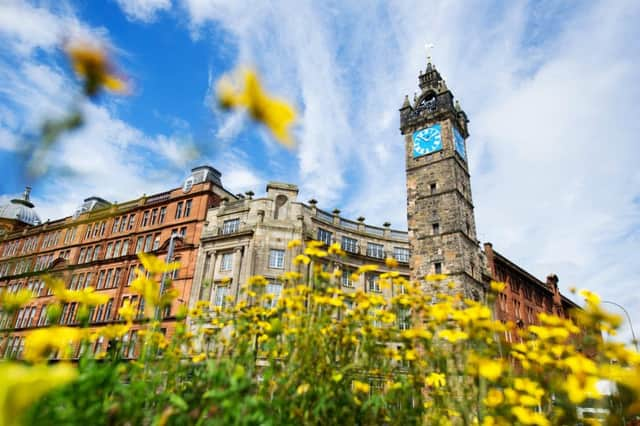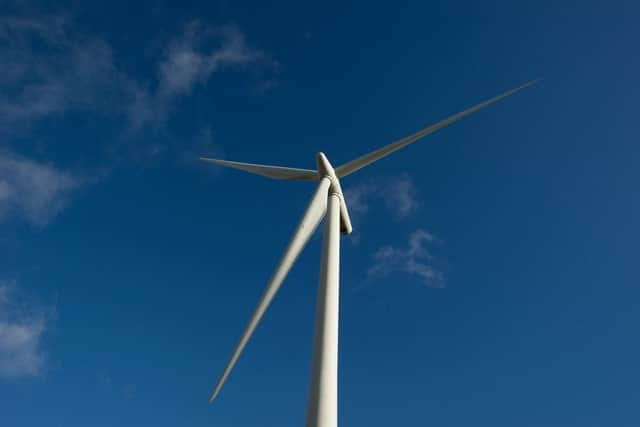Could Glasgow become Scotland's biggest power station?


The ambitious proposals involve establishing a community-owned company which would convert derelict land or buildings into renewables hubs to wean the city off its reliance on the national grid.
With tough climate change legislation and fossil fuel levies due to take effect in the coming years, campaigners believe now is the time to begin serious discussions on how electricity can be produced and sold at a local level rather than relying upon the existing system of remote power stations based across the country.
Advertisement
Hide AdAdvertisement
Hide AdGlasgow is uniquely positioned to benefit from a new wave of urban solar farms and windmills due to the “unusual” amount of vacant land and buildings, many of them already under public ownership, within its boundaries.


Jim Metcalfe, a trustee and director of the UK Energy Saving Trust, said changing the way we produce and use energy was a worldwide challenge - but one that could be met at a local level.
“Our cities can and must do more,” he said. “We must take on more responsibility for that concerted energy action. Policy makers and the public sector alone cannot deliver the pace of change that is needed.”
Metcalfe delivered a talk on the subject at a meeting of the Glasgow Skeptics society this week, in which he outlined why Scotland’s biggest city could take the lead on energy sustainability.
“The city has a high level of energy demand, both from domestic and commercial users,” he said.


“It also has an unusual amount of space with the potential for generation. Its supply potential is very high, and new and improving technology means we can exploit it.
“What we want to do is match up the generation of energy with using any marginal profits to help the efficiency question.
“Glasgow already faces a significant challenge in fuel poverty and energy inefficiency in its housing stock. So it has a big problem to address and a high energy demand to fulfil.”
Advertisement
Hide AdAdvertisement
Hide AdGlasgow City Council said it was already in the process of setting up an energy services company which will oversee the creation of renewables low carbon projects in the city.
It has already carried out mapping of derelict and vacant land across the city has been carried out to determine which sites would be best suited for use as mini-solar farms – either by the council or for community-owned projects.
Metcalfe’s proposals, which are based on research carried out by the Energy Saving Trust, would move beyond even the most ambitious of the local authority’s plans.
By far the most radical aspect of his vision is the creation of a locally-owned company which would able to reinvest profits from power generation on improving building insulation and reducing fuel poverty.
“The proposal is to design either a community-owned company or social enterprise based in the city, which would take on land, often gifted, and then collectively raise finance to build power installation to generate power,” he said.
“This would not be about individual people with solar panels on their roofs - it would be a larger scale establishment.
“The intention is to draw the potential recipients into the initial proposals. Some of the costs would be met by commercial and public partners who would benefit in the longer term.
“More and more large businesses, from IKEA to Marks & Spencer are making commitments to sourcing local green energy supplies.”
Advertisement
Hide AdAdvertisement
Hide AdMetcalfe points to the increased affordability of renewables technology as proof that his plan could be affordable.
The cost of installing photovoltaic solar panels is falling so fast it is estimated that 20 per cent of global electricity could be met by solar by 2027, rather than 16 per cent by 2050 as was previously thought.
He added: “The next step is building a group of energy and engineering experts in the city, who understand land usage, but also bring in community groups, to develop more detailed proposals.
“Once we have the expertise, we’ll look at forming a limited company.”
Meanwhile, the local authority is exploring other renewable energy sources.
The council is working with the British Geological Society to explore the possibility of using geo-thermal energy
A study will help identify which parts of the city would offer the best prospects of supplying this kind of energy, as well as looking at the potential heat within water in former mineworks and bedrock aquifers beneath the city.
A spokesman for Glasgow City Council said: “Glasgow is striving to become one of the most sustainable and resilient cities in Europe and harnessing renewable energy and securing future energy supplies for our citizens are a major part of that aspiration.
Advertisement
Hide AdAdvertisement
Hide Ad“The council is also setting up its own energy services company to nurture and promote the use of renewable energy, cut carbon emissions which contribute to climate change and give city residents greater access to affordable energy.
“Meanwhile, we are working with partners to support the creation of more district heating systems in the city, similar to the one at the former Commonwealth Games athletes’ village.”